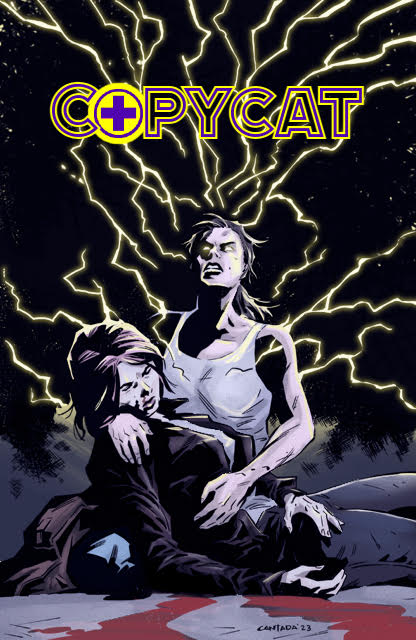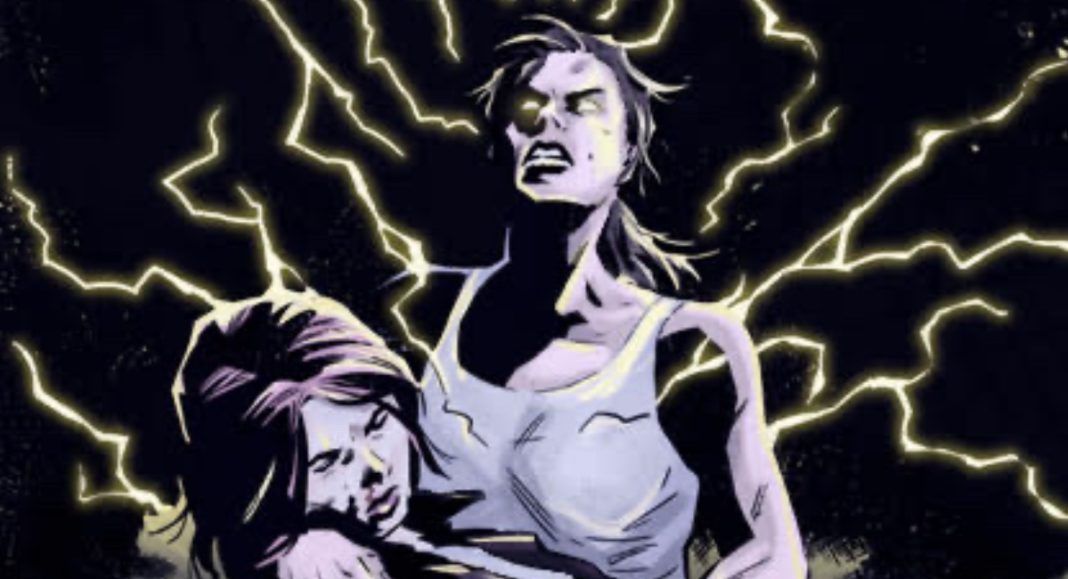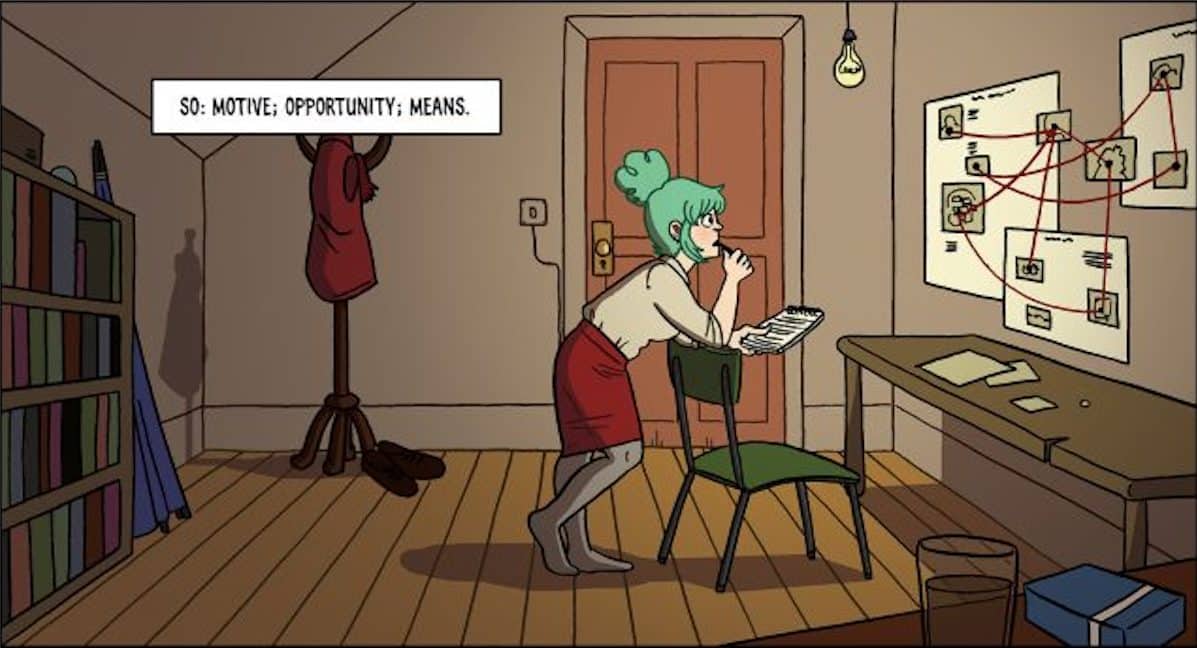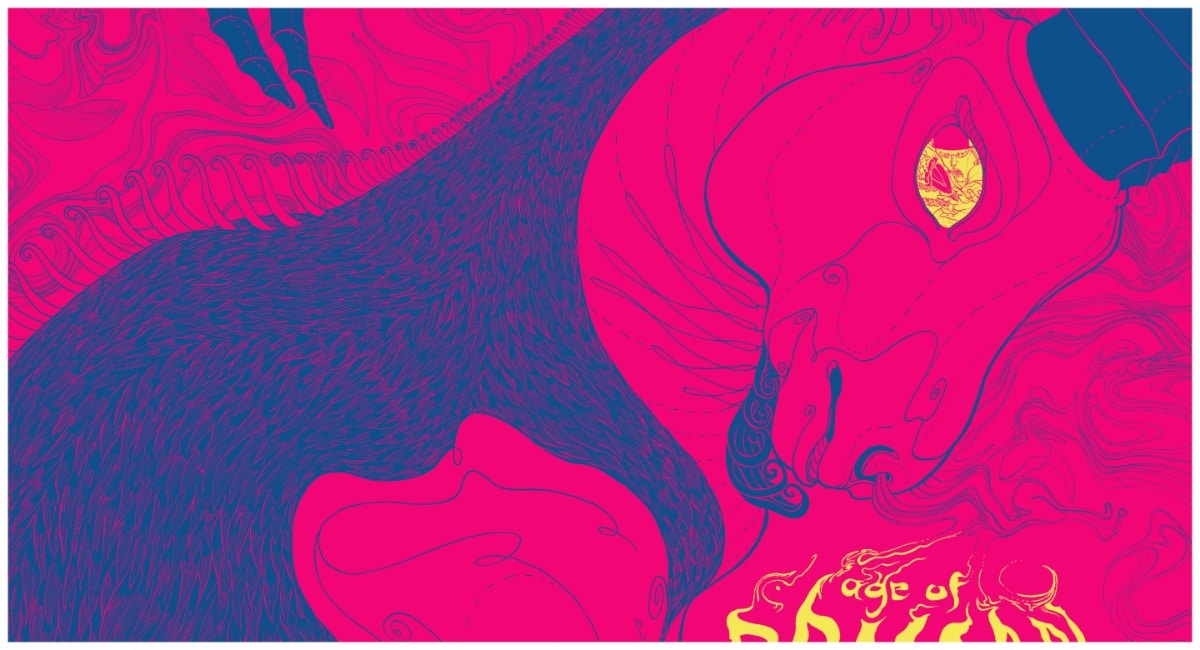One of the latest projects crowdfunding on Zoop is the Todd Garner concept art-inspired Copycat, written by Hustle & Hearts Films’ duo Cullen Bunn (Deadpool Kills the Marvel Universe) and Heath Amodio (The Heathens), with line art by Elmer Cantada (Masque), colors by Gabe Contreras (Witchblood), and letters by Dave Lentz (Good Boy). Copycat is about a talented ER nurse who can diagnose her patients with a single touch, with one big caveat: she feels the same agony as those she cares for. It’s a fully completed graphic novel, and is available to back now on Zoop!
The Beat caught up with the Copycat creative team over email recently. We asked about the origin of the graphic novel, what the process has been like creating it, and the experience of doing a crowdfunding campaign through Zoop!

Diego Higuera: Can you share the origins of Copycat, including how the concept by producer Todd Garner came about and how it evolved into a collaboration with Cullen Bunn and Hustle & Heart Films?
Heath Amodio: I approached Todd after binging his podcast, where he interviews other film industry professionals. He seemed like a guy we really had to work with, especially when you look at his body of work. Tag, Sorcerer’s Apprentice, and most recently, the Mortal Kombat film, to name a few. He said he had a concept that he’d love to see as a comic, and he sent it our way. It was very important to him that the story be grounded, action-packed, and with a good mystery at its core. After some back-and-forth creative discussions, we had an outline that Todd was really happy with. We were off and running.
Cullen Bunn: As I remember it (and, let’s be honest, my memory is trashed these days), I remember Heath texting me about the project while I was at the coffee shop. I loved the initial idea straight away. We texted back and forth about the initial concept. I must have been on a caffeine high because the ideas were coming at a fast and furious pace. We were hashing out a storyline within minutes of my first hearing about the project.
Higuera: How was the collaborative process between Cullen Bunn, Heath Amodio, Elmer Cantada, Gabe Contreras, and Dave Lentz in bringing the graphic novel to life?
Amodio: Cullen has a process that’s made him one of the most consistent and prolific writers in the industry. I try to do my best not to slow that down. There’s some story discussion about the characters’ arcs, story beats, and where we want to end up. We outline it by scene/page number and then pick which scenes we’d most like to write. After some verbal slap-boxing, we dive into our pages. Then, come back together and make it into a cohesive story.
Bunn: I’ll be very honest here. I’m not a pleasure to work with in terms of co-writing. I’m too much of a control freak. I like things done a certain way. It’s remarkable Heath puts up with me.
Amodio: Regarding the art team, there’s some notes involved following the initial rough sketches of the pages, but Ev (Elmer) always brought the heat, so there was actually very little editing involved. Gabe crushed the colors straight out of the gate. As did Colin Johnson on the cover. We always try to have a great dialogue with the letterers because it may take a few passes to get the sound that one really wanted in each scene. Both Dave and Taylor Esposito are very patient pros that did great work.
Ev (Elmer): I’d be thrilled to discuss my approach to visually representing characters and their powers in a graphic novel! When crafting the visual aspects, I focus on ensuring each character’s design reflects their personality and powers. For instance, using distinct color palettes, unique visual cues, and dynamic illustrations to convey their abilities.
Stylistically, I often experiment with different art techniques and layouts to enhance storytelling. Panel composition, linework, and shading play vital roles in conveying the narrative’s mood and pacing. It’s essential for me to create a synergy between visuals and storytelling to captivate readers and immerse them in the narrative.
Higuera: Can you delve into the characterization of Sarah? What challenges and internal conflicts does she face throughout the story?
Amodio: Sarah has a power that she’s kept to herself because she doesn’t want to be labeled a freak, and because when she uses it, it comes with a cost. She absorbs and suffers through the same symptoms or pain as those she leeches from.
She has a desire to help people, and that led her to become a nurse. When a patient comes into her ER suffering from an immense and intense pain, her need to help supersedes her caution about her powers. Sarah leeches the woman’s pain in order to diagnose her, and she’s sent home because of it.
Bunn: The thing I like most about the character of Heather is that, yes, she has this super power, but that’s not what makes her so special. It’s her real world profession—that of a nurse—that sets her apart. It’s something I’ve been interested in since my days of writing Fearless Defenders for Marvel. Real world heroes in these sci-fi/superheroic situations.
Amodio: Then she’s left with the internal battle of helping over secrecy. If using her power to help her patients leads to her termination, is that worth it in the long run? She’s contemplating this when a woman named Emma stumbles out of a building and dies in her arms. Sarah unintentionally leeches Emma’s superstrengh, and uses it to fight off the murderer, but now she’s a loose end.
Hunted by superhuman killers, she’s forced to use her powers to survive, but it’s her unwavering need to help that drives her to solve Emma’s murder. The investigation will lead in an unexpected direction, uncovering a tragic event she’d suppressed from her childhood. Revealing that it’s all tied together.
Higuera: How did Elmer Cantada approach the visual representation of the characters and their powers in the graphic novel, and what stylistic choices were made to enhance the storytelling?
Bunn: Elmer took the idea of making this a grounded story to heart. His artwork is very “real world.” Even the display of Sarah’s powers is toned down from what you might expect in a book with super powers. Toned down. But still very dramatic. These pops of color and electrifying energy really set that display apart.
Higuera: Are there specific themes or genres that Copycat explores, and how does it navigate the balance between character-driven drama and the superhero/supernatural elements?
Amodio: The powers aren’t who Sarah is. She’s a nurse. She cares about people, and her true power may be her empathy. She really just uses them to survive. She doesn’t seek out action. Sarah doesn’t wake up and think about bashing in the heads of some criminals. Her goal is to help as many sick or suffering people as she can, and she uses the powers more out of necessity than any sort of hero complex.
As the story unfolds, she’s forced to relive a very traumatic moment in her past, and it’s ultimately what led her into a field that serves others in the first place.
Bunn: What’s really cool about this story is that I think it would be very compelling and interesting even if there weren’t sci-fi/horror elements. The supernature, though, takes it to a completely different level while still feeling like it is something that could happen in our world.
If you want to become a backer, learn more information here!







